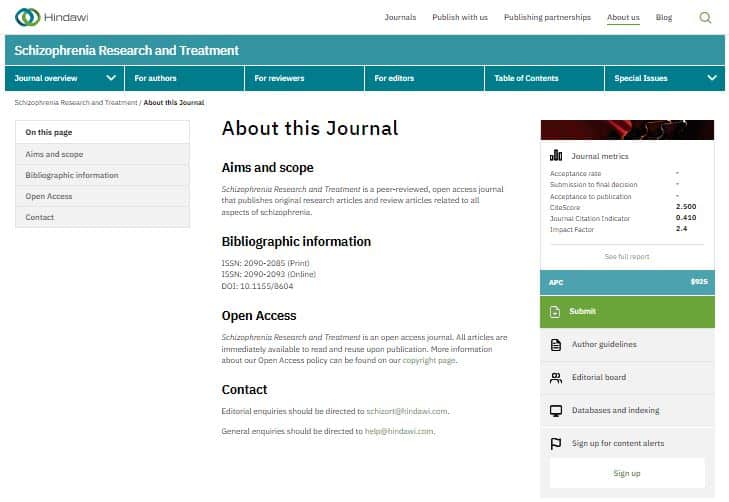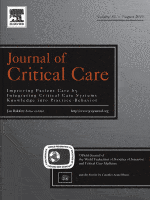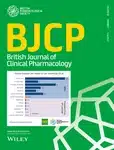
Comparison of Efficacy and Safety between Long-Acting Injectable Antipsychotic Monotherapy and Combination of Long-Acting Injectable and Oral Antipsychotics in Patients with Schizophrenia (2021)
Title : Comparison of Efficacy and Safety between Long-Acting Injectable Antipsychotic Monotherapy and Combination of Long-Acting Injectable and Oral Antipsychotics in Patients with Schizophrenia
Researcher : Sathienluckana, T., Tiangpattanawong, P., Chaiyasukthananoan, K., Jittayanan, P., Sawetwangsing, H., Puchsaka, P.
Abstract : Background
Long-acting injectable (LAI) antipsychotics are used as a monotherapy in patients with schizophrenia. However, the combination of LAI and oral antipsychotics is commonly used in clinical practice, despite there being very limited studies investigating the efficacy and safety of this combination compared with LAI antipsychotic monotherapy.
Objective
To study the efficacy and safety of LAI antipsychotic monotherapy compared with the combination of LAI and oral antipsychotics in patients with schizophrenia.
Methods
This study was a retrospective cohort study, which classified eligible patients into two groups: the LAI antipsychotic monotherapy group and the combination of LAI and oral antipsychotic group. The primary outcome was hospitalization between groups. The duration of the study was 2 years.
Results
In total, 86 patients completed the study and were analysed (LAI antipsychotic monotherapy group: n = 25; combination of LAI and oral antipsychotic group: n = 61). There was no significant difference in hospitalization between the two groups (P = 1.000). For other outcomes, there were also no significant differences in both all-cause discontinuation (P = 0.667) and adverse drug reactions (P = 0.732) between the two groups.
Conclusion
The efficacy and safety of LAI antipsychotic monotherapy appeared similar to the combination of LAI and oral antipsychotics in patients with schizophrenia. Therefore, the combination of LAI and oral antipsychotics, which is commonly used in clinical practice, may not be necessary.
Link to article: doi: 10.1155/2021/8403986
Journal : Schizophr Res Treatment
Bibliography : Sathienluckana, T., Tiangpattanawong, P., Chaiyasukthananoan, K., Jittayanan, P., Sawetwangsing, H., & Pummangura, C. (2021). Comparison of Efficacy and Safety between Long-Acting Injectable Antipsychotic Monotherapy and Combination of Long-Acting Injectable and Oral Antipsychotics in Patients with Schizophrenia. Schizophrenia Research and Treatmentthis, 2021, 8403986. https://doi.org/10.1155/2021/8403986

Doripenem dosing regimens in Asian critically ill patients with continuous renal replacement therapy (2019)
Title : Doripenem dosing regimens in Asian critically ill patients with continuous renal replacement therapy (2019)
Researcher : Chaijamorn, W., Puchsaka, P.W., Pattharachayakul, S., …Boonpeng, A., Pummangura, C.
Abstract : Antibiotic dosing in critically ill patients with continuous renal replacement therapy (CRRT) is still challenging. Pharmacokinetic changes in critically ill patients such as increased volume of distribution and decreased protein binding affinity affect hydrophilic drug dosing regimens [1]. Consequently, we might prescribe inadequate doses of antimicrobial agents in patients with CRRT [1] which can affect the morbidity and mortality associated with sepsis [2]. Requirement of loading dose and higher maintenance doses for this group of patients has been suggested to achieve pharmacokinetic and pharmacodynamic targets [3].
Continuous renal replacement therapy has been utilizing to effectively remove fluid and waste products in this group of patients due to hemodynamic instability [4]. Doripenem is a water-soluble carbapenem antibiotic and commonly used for Gram negative infection in intensive care unit (ICU) [5]. It can be removed by CRRT due to small molecular weight (438.52 Da) and low volume of distribution (16.8 L) [6].
The recommended dosing regimens from clinical resources are mostly from the pharmacokinetic studies in Western patients and there were a few studies conducted in Asian population [[7], [8], [9], [10], [11], [12]]. No suggested doripenem dosing regimens for CRRT patients based on Asian pharmacokinetic parameters exists. This study aimed to define the optimal doripenem dosing regimens using pharmacokinetic parameters from Asian population and body weights of Asian critically ill patients and to evaluate the probability of target attainment (PTA) of recommended dosing regimens from available clinical resources.
Link to article: https://doi.org/10.1016/j.jcrc.2019.04.030
Journal : Journal of Critical Care, 2019, 52.
Bibliography : Chaijamorn, W., Puchsaka, P., Pattharachayakul, S., Charoensareerat, T., Srisawat, N., Boonpeng, A., & Pummangura, C. (2019). Doripenem dosing regimens in Asian critically ill patients with continuous renal replacement therapy. Journal of Critical Care, 52, 233–236.

Effects of pharmacist interventions on cardiovascular risk factors and outcomes: An umbrella review of meta-analysis of randomized controlled trials (2022)
Title : Effects of pharmacist interventions on cardiovascular risk factors and outcomes: An umbrella review of meta-analysis of randomized controlled trials
Researcher : Rattanavipanon, W., Chaiyasothi, T., Puchsaka, P., …Veettil, S.K., Chaiyakunapruk, N.
Abstract : Aims
To grade the evidence from published meta-analyses of randomized controlled trials (RCTs) that assessed effects of pharmacist intervention on cardiovascular risk factors and cardiovascular outcomes.
Methods
MEDLINE, Embase, and the Cochrane Library were searched from database inception to July 2021. Meta-analyses of RCTs were eligible. Quality of evidence were assessed by GRADE approach.
Results
From 9308 publications, 149 full-text articles were evaluated for eligibility, and 24 studies with 85 unique meta-analyses that assessed effects of pharmacist intervention on cardiovascular risk factors and cardiovascular outcomes were selected. Overall, 71.7% (61/85) of unique meta-analyses showed significant impacts of pharmacist intervention. For the quality of evidence, 63.4% of meta-analyses had large heterogeneity (I2 > 50%) while 1.2, 16.5, 32.9 and 49.4% of meta-analyses were graded as high, moderate, low and very low quality based on GRADE approach, respectively. Among meta-analyses with moderate quality, pharmacist interventions significantly mitigated risk factors (including 6/3 mmHg reduction of blood pressure, increased the rate of lipid control, glucose control and smoking cessation (pooled odds ratio, [95% confidence interval] 1.91 [1.55, 2.35], 3.11 [2.3, 4.3] and 2.3 [1.33, 3.97], respectively) and improved medication adherence (1.67 [1.38, 2.02]). Furthermore, pharmacist interventions significantly reduced all-cause mortality (0.72 [0.58, 0.89]) and improved quality of life in patients suffering from chronic heart failure.
Conclusion
This umbrella review found convincing evidence that pharmacist intervention can provide a wide range of benefits in cardiovascular disease management, ranging from risk factor control, improvement in medication adherence and, in some settings, reduction in morbidity and mortality.
Link to article: https://doi.org/10.1111/bcp.15279
Journal : British Journal of Clinical Pharmacology, 2022
Bibliography : Rattanavipanon, W., Chaiyasothi, T., Puchsaka, P., Mungkornkaew, R., Nathisuwan, S., Veettil, S. K. & Chaiyakunapruk, N.(2022). Effects of pharmacist interventions on cardiovascular risk factors and outcomes: An umbrella review of meta-analysis of randomized controlled trials. British Journal of Clinical Pharmacology, 88(7), 064–3077. https://doi.org/10.1111/bcp.15279

α-Lipoic acid sensitizes lung cancer cells to chemotherapeutic agents and anoikis via integrin β1/β3 downregulation(2516)
Title : α-Lipoic acid sensitizes lung cancer cells to chemotherapeutic agents and anoikis via integrin β1/β3 downregulation (2516)
Researcher : Puchsaka, P.W., Chaotham, C., Chanvorachote, P.
Abstract : Chemotherapeutic failure and metastasis are the main causes of high mortality rate in lung cancer. Alteration of cellular redox status in response to endogenous stimuli or exogenous compounds has a significant impact on cell signaling and behavior. Herein we divulge for the first time that lung cancer cells exposed to α-lipoic acid (LA) resulted in a higher level of cellular superoxide anion (O2·-) and hydrogen peroxide (H2O2), and such an increase of the specific reactive oxygen species (ROS) downregulated integrin β1 and β3, the integrins known for potentiating aggressive behavior and metastasis. The LA-treated cells exhibited significant decrease in their abilities to survive in detached condition and grow in anchorage-independent soft agar assay. Furthermore, LA sensitized the cells to cisplatin, etoposide and paclitaxel-induced apoptosis. For underlying mechanism, we found that the treatment of the cells with LA significantly decreased integrin β1 and β3, while had no effect on integrin α5 and αv. Interestingly, survival protein p-AKT and anti-apoptotic protein Bcl-2 were reduced in an association to such integrin modulations. Using ROS probes and selective anti-oxidants, we have shown that H2O2 and O2·- induced by LA are key players for the decrease of β1 and β3 integrins, respectively. These findings indicate a novel effect of LA as well as specific ROS, O2·- and H2O2 in integrin regulation, anoikis and chemotherapeutic sensitizations.
Link to article: DOI: 10.3892/ijo.2016.3624
Journal : International Journal of Oncology, 2016, 49(4)./ in Scopus